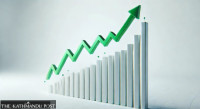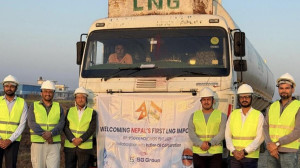Money
Private sector investment: Investment in fixed capital assets up 41.6pc
The private sector’s investment in fixed capital assets, such as plants, machinery and infrastructure, excluding land and cars, is expected to jump 41.6 percent in the current fiscal year, powered by normalisation in supply situation and promising mid-term economic outlook.
Rupak D. Sharma
The private sector’s investment in fixed capital assets, such as plants, machinery and infrastructure, excluding land and cars, is expected to jump 41.6 percent in the current fiscal year, powered by normalisation in supply situation and promising mid-term economic outlook.
The private sector is likely to invest Rs689.3 billion in fixed capital assets in 2016-17, as against Rs486.8 billion a year ago, indicating strong revival in private investor confidence, says the National Account Report just published by the Central Bureau of Statistics (CBS), the government statistics agency.
“Lately, a huge chunk of investment has gone into the construction sector. As a result, sales of heavy-duty vehicles and other equipment have gone up. Also, investment in sectors, such as hydro, aviation and hotel, has gone up, reflecting upbeat mood,” said Suraj Vaidya, former president of the Federation of Nepalese Chambers of Commerce and Industry. “If there is political and policy stability, investment will flow into other sectors as well.” The projected hike in private sector investment in fixed capital assets in this fiscal year is commensurate with the hike in imports of capital goods. Imports of agricultural equipment and parts, for example, surged 122.8 percent to Rs11.1 billion in the first eight months of the fiscal year, while imports of aircraft and spare parts rose 35.4 percent to Rs9.2 billion in the same period, shows the latest report of the Nepal Rastra Bank.
Also, imports of telecommunications equipment and parts jumped 44.8 percent to Rs20.1 billion, while imports of ms billet, which is used to produce steel rods, surged by a whopping 170.5 percent to Rs31.4 billion in the first eight months of 2016-17.
Rise in imports of these goods indicates the private sector has once again started making investments in areas that were avoided in the last fiscal year due to India-imposed trade blockade, which chocked supplies of almost everything and inhibited industrial activities.
Along with the hike in private sector investment in fixed capital formation, public investment in fixed capital formation is also projected to rise by 17.9 percent to Rs189.3 billion in this fiscal year, show the CBS data.
But the hike in public investment in fixed capital formation is unlikely to attract as much private investment as in the past. In the fiscal year 2014-15, for instance, every rupee of investment made by the government in fixed capital assets had led the private sector to create Rs4.4 worth of fixed capital assets. This amount dropped to Rs3 last fiscal year due to a dent in investor confidence triggered by the trade blockade.
In this fiscal year, every rupee of investment made by the government in fixed capital assets is expected to create private fixed capital assets worth Rs3.6, which is lower than the average of Rs4 per year in the last decade.
“The ratio has fallen because the government does not always look for returns like the private sector. So, it is sometimes forced to spend money on projects that may not attract private investment, but benefit people and the society,” said CBS Director Jishnu Mohan Bhattarai, ruling out the possibility of erosion in the efficiency of public spending.
Yet the country’s gross fixed capital formation is expected to shoot up to a record Rs878.6 billion in the current fiscal year from Rs647.3 billion recorded in the last fiscal year. The projected gross fixed capital formation of this fiscal year is 33.8 percent of the country’s estimated gross domestic product (GDP) of Rs2,599.2 billion.
This surge in gross fixed capital formation means Nepal, in the current fiscal year, is likely to invest 33.8 percent of the GDP to purchase or build fixed capital assets, like machinery, plants, including hydro, roads, airports, irrigation facilities and bridges, which create jobs and are critical for economic growth, while the rest of the amount will be exhausted in consumption.
In the last fiscal year, the country’s gross fixed capital formation as a percentage of GDP stood at 28.8 percent. It is generally said gross fixed capital formation accounts for three-fourth of the economic growth in low-income countries, like Nepal. The share of gross fixed capital formation in economic growth starts declining once the country transforms into a middle-income economy, where other factors, like research, innovation and application of skills, play a greater role in triggering growth.




 10.12°C Kathmandu
10.12°C Kathmandu















